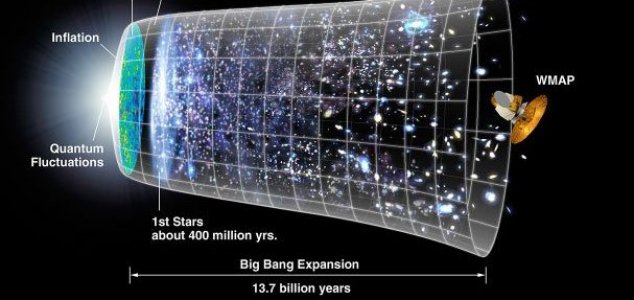
The standard model of the universe based on the Big Bang.
1. It was named for a famous astronomer.
The Hubble Space Telescope takes its name from Edwin Hubble, an American astronomer whose observations helped broaden scientists’ view of the universe to include galaxies other than our own. While working at the Mount Wilson Observatory in 1923, Hubble determined that Andromeda—then considered a nebula—was actually a separate galaxy hundreds of thousands of light years away from our Milky Way. He made another groundbreaking discovery in 1929, when he helped quash the “static universe” theory by finding evidence that galaxies move away from one another at a constant rate. Hubble died in 1953, but the telescope that bears his name has since confirmed and fine-tuned many of his theories.
2. The telescope was several decades in the making.
Hubble’s early origins date back as far as 1946—more than 10 years before NASA was established. That was the year that astrophysicist Lyman Spitzer Jr. penned an influential paper discussing the merits of a space-based observatory. In it, he argued that an in-orbit telescope could view the heavens unhindered by the Earth’s atmosphere, which can blur images. Spitzer was later instrumental in developing the Orbital Astronomical Observatories, four unmanned satellites that NASA launched between 1966 and 1972, and he tirelessly lobbied the government to create a bigger and better space telescope. The project’s massive costs proved a major stumbling block, however, and it wasn’t until 1977 that the U.S. Congress finally appropriated funding for what would become Hubble.
3. The launch was delayed by the Challenger disaster.
The fledgling Hubble program suffered a massive blow in 1986, after the space shuttle Challenger exploded during liftoff, killing seven astronauts. NASA grounded its space fleet in the wake of the tragedy, leaving Hubble—which depended on the shuttle for its transport and maintenance—without a ride into orbit. Scientists made good use of the delay by upgrading the sensitivity of the telescope’s instruments and refining its ground control software, but the added years of servicing and storage in a high tech clean room sent costs soaring. By the time the space shuttle Discovery finally lifted off in 1990 with Hubble tucked into its cargo bay, the project was seven years behind schedule and more than $1 billion over budget.
The current most widely accepted model of the universe’s birth suggests that it came in to being some 13.8 billion years ago when everything in existence, which at that time occupied a single point of infinite density, began to expand at an exponential rate in an event that is commonly referred to as the Big Bang.
Now however scientists have put forward a radical new model in which they predict that the universe has no beginning or end at all and has instead existed for all of eternity.
The highly complex and confusing theory combines elements of both quantum mechanics and General Relativity to account for the universe’s existence and even takes in to account dark matter and dark energy, two cosmological mysteries that current theories are unable to account for.
The new model also does away with the idea of singularities altogether, meaning that just as it eliminates the concept of the world coming in to being from a single point, so too does it suggest that the universe could never collapse back down in a “big crunch” event either.
“The Big Bang singularity is the most serious problem of general relativity because the laws of physics appear to break down there,” said study co-author Ahmed Farag Ali.
Originally posted 2015-11-09 15:29:14. Republished by Blog Post Promoter












